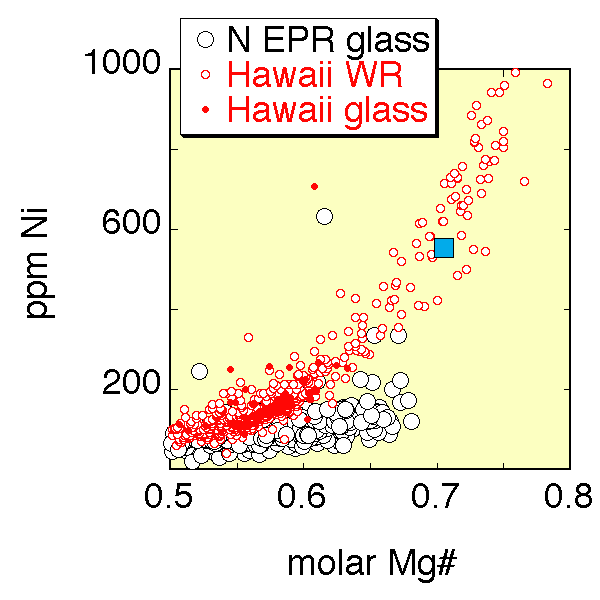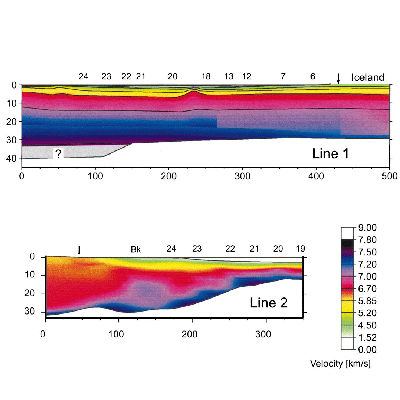|
|
 |
Tertiary Magmatism in East Greenland and Hotspot Magmatism Worldwide
- Layered intrusions in East Greenland, mostly close to the contact between PreCambrian gneisses and Tertiary flood basalts, are commonly several million years younger than the flood basalts. Trace element and isotope geochemistry of these intrusions supports the idea that the Iceland hotspot was beneath central Greenland during rifting, and did not cross the coast until 50 Ma, about 5 Ma after seafloor spreading initiated in the rift between Greenland and Europe.
- Seismic studies of East Greenland margin show systematic variation in the thickness and width of thick igneous crust formed along the margin during rifting, with the volume of igneous crust decreasing with increasing distance from the Iceland-Greenland Rise. In general, this can be explained by variation in mantle temperature and/or upwelling rate away from the hotspot track. However, seismic velocities are suprisingly slow, and do not require a mantle thermal anomaly during rifting at 63°N.
- Analysis of primitive basalts throughout the North Atlantic region indicates that mantle derived magmas must have been derived from a source that was more Fe-rich, Ni-rich, or had a higher oxygen fugacity than the source of mid-ocean ridge basalts.
- ONGOING RESEARCH includes studies of the Borgtinderne syenite and other felsic intrusions coeval with and later than mafic intrusions in East Greenland (what was the heat source for this magmatism?), studies of the ultramafic Einar Michelsson intrusion, which Stefan Bernstein and I discovered during our summer 2000 field season, and analysis of Fe- and Ni-systematics in hotspot magmas worldwide.
|
|

